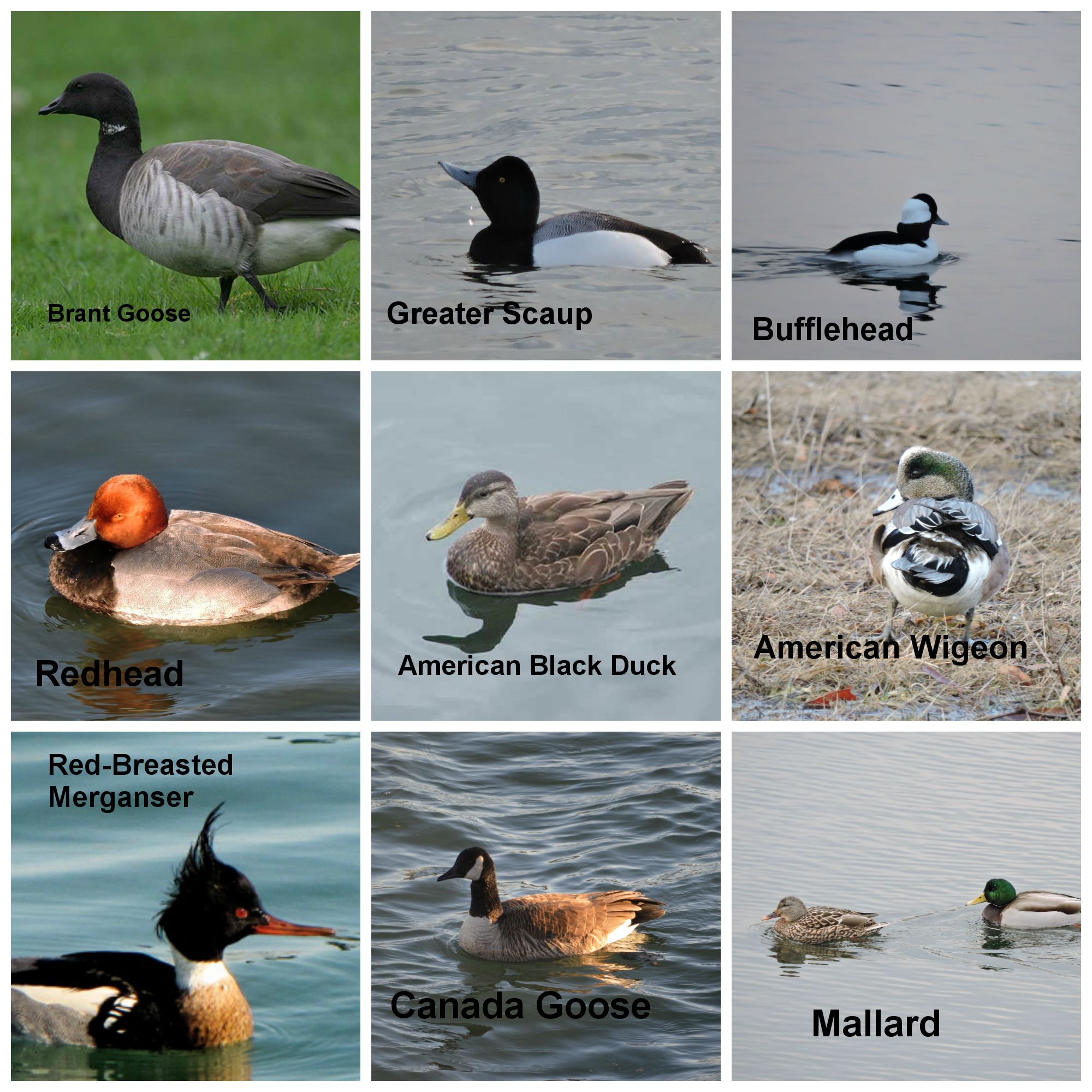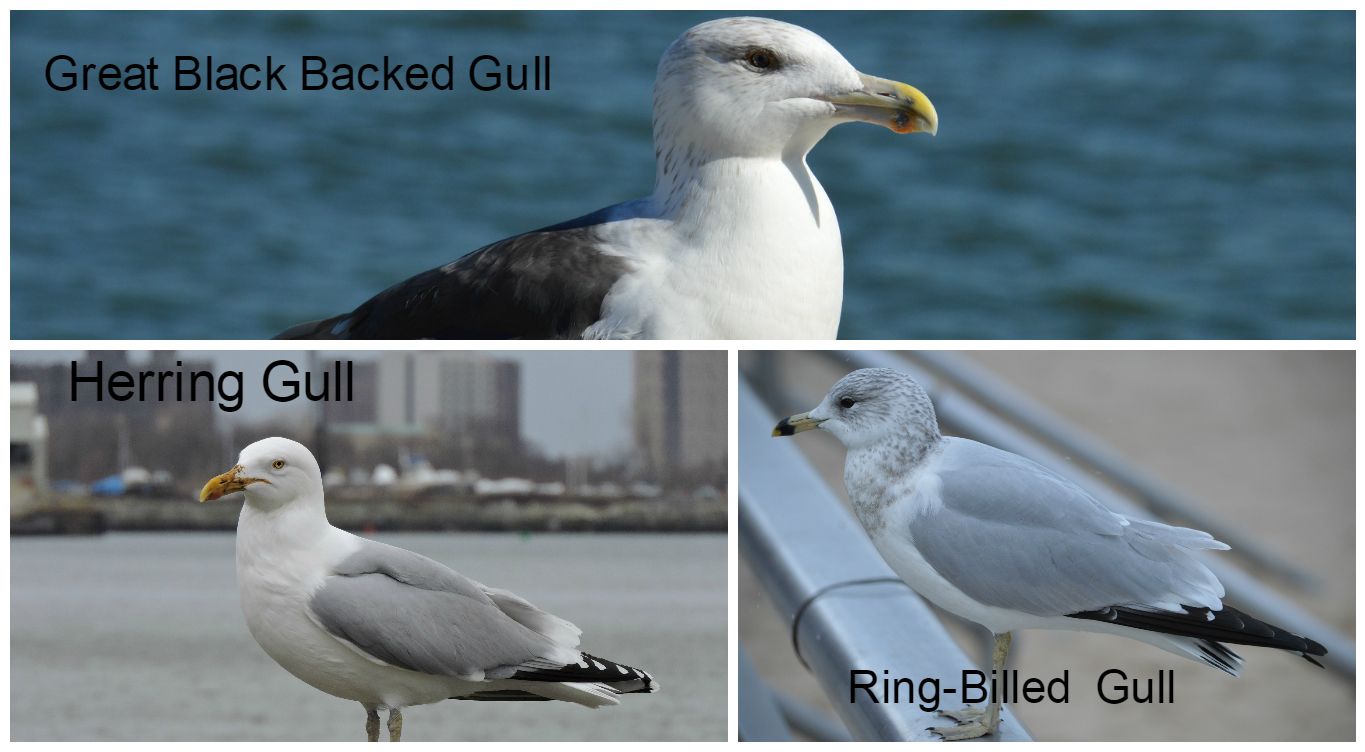Your Winter Guide To Birdwatching In Sheepshead Bay

You’re walking down Emmons Avenue all bundled up, your cheeks are burning red and your breath is mushrooming in front of you. Then you see them, those smug waterfowl, just lounging in the frigid water! Have you ever stopped to see just how many species live along Emmons Avenue during the winter? While it may not seem like it to us, the water around New York City is absolutely balmy to our avian neighbors. we have a diverse ecosystem that is home to an exciting assortment of arctic and resident birds. While you might be frozen to the bone, take comfort that in the fact that the weather is for the birds!
The Ducks, Geese and Mute Swans of Sheepshead Bay:
Sheepshead Bay is home to two species of ducks year round: The American Black Duck and the Mallard. However, every winter we get a few regular visitors (Pictured below). See how many you recognize in the photo. While this list is not expansive, it covers those frequently seen in Sheepshead Bay during the past few winters.

The Canada Goose and Brant Goose mostly live within the arctic tundra but come to the city every fall and winter to munch on the wide variety of grasses and other foods that grow during New York’s comparatively mild winters.
Ducks, geese and swans are all classified as anseriformes. They have remarkable insulation to keep warm. The fine webbing of feathers helps trap air and repel cold water, keeping the ducks happy and productive. Those fleshy flippers on anseriformes may not be covered in feathers but have evolved a remarkable “heat redistribution center” within the veins that pumps cold blood away from the feet and warm blood into them.
The Gulls of Sheepshead Bay:

Gulls are the most commonly seen birds in Sheepshead Bay. These large, water-loving birds bully their way through a crowd to grab as much food as they can. You may have noticed that some gulls have a lot of brown or soot-color on them. Typically, this means that they are not quite adults yet. Gulls, like many birds, take several years to reach adult plumage and are especially long-lived. It is not unheard of for gulls to live well into their 30s or older in the wild. A combination of resourcefulness, intelligence and few predators keep most gulls around for decades. Watch out for the the Great-Black Backed gull. This is the largest and most powerful of the species in the world and one of a few species of gulls that will actively kill and eat other animals instead of scavenging. Herring gulls, the ubiquitous gull of the beach, is perhaps our most common in New York City. These powerful birds will not hesitate to shove anyone out of the way when it comes to food. Meanwhile, the demure Ring-Billed Gull is one of a few migratory gull species. Most of the Ring-Billed gulls seen in the city are coming by way of Montreal.
Another surprising fact about gulls: They can actually drink salt water. Gulls and several other bird species have built-in desalinization: handy for a life by the sea.
The Waterfowl of Sheepshead Bay:
Sheepshead Bay is home to many Double-Crested Cormorants. They are a particularly ancient lineage of bird and have changed very little in the past several million years. Double-Crested Cormorants can frequently be seen with their wings stretched dragonlike, drying themselves in between dives for fish and crustaceans.
While a bit harder to spot than our other avian neighbors, the grebe and loon species are regulars by the Ocean Avenue Bridge on cold days. Look for the large Common Loon and Red-Throated Loon. The Common Loon, famous for its haunting song, comes down to our waters in October and will stay until about April. Both species of loons take on drabber appearances in the winter, growing in fresh new plumage for their spring journeys north.
The much smaller Pied-Bill Grebe and Horned Grebe can frequently be seen diving into the water to catch fish or crustaceans. While we may not have penguins in New York, Double-Crested Cormorants, loons and the grebes are actually distant relatives of the penguin family!

What to feed the birds:
The best answer is: DON’T! While the ducks and geese around Sheepshead Bay will readily take bread and other starches from you, this can seriously harm them in the long run. Many ducks that eat a lot of bread bread develop deformities and die prematurely. If you insist on feeding the ducks, stick to bird seed, frozen peas/corn or grape slices. These foods are closer to their diet and will not harm their health. Keep in mind that animals have been feeding themselves long before us and they’re especially adapted to survive even the most brutal winters!
When to go:
The beauty of living in Sheepshead Bay is that you’re never far from a great source of wildlife viewing, though certain conditions are better than others. Birds, like all animals, are opportunists when it comes to feeding and seeking shelter. When the weather is a bit rainy, you’ll see many more of them crowding around the bay because conditions further out on the water are often worse. Connected to this, on very sunny or milder days, you’ll often see fewer birds because they now have more options for gathering food.
Walking along Emmons Avenue to look for birds can be a great excuse to get outdoors this winter with purpose. With the ever increasing development of Sheepshead Bay, why not take the time to visit our avian neighbors, who have been making the coastal waters of Brooklyn their home for millennia. While this article does cover a lot of the birds you might see, it’s by no means expansive. Check out the website All About Birds for more bird identification tips.



